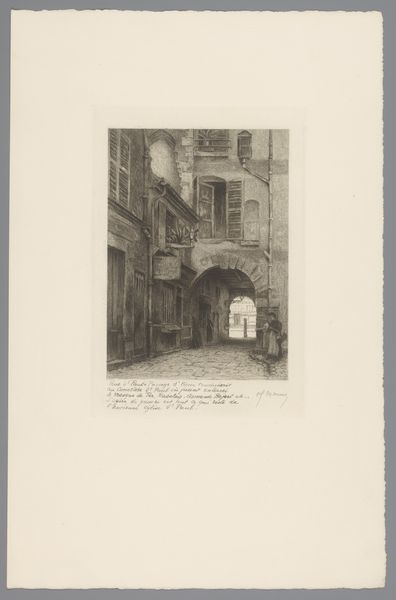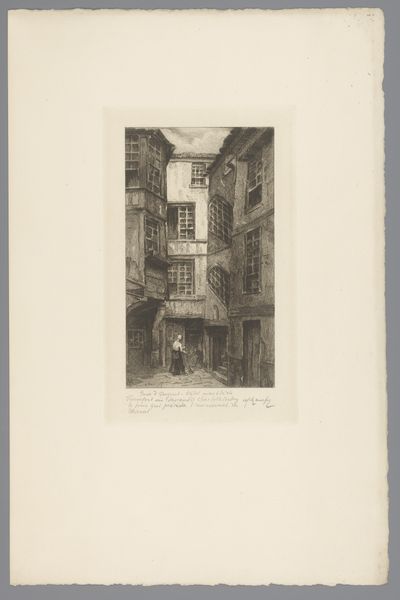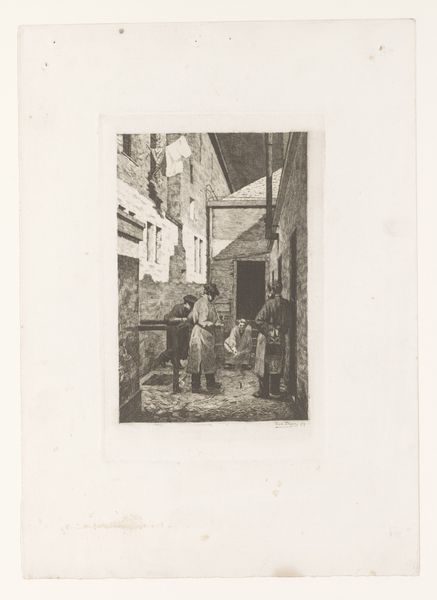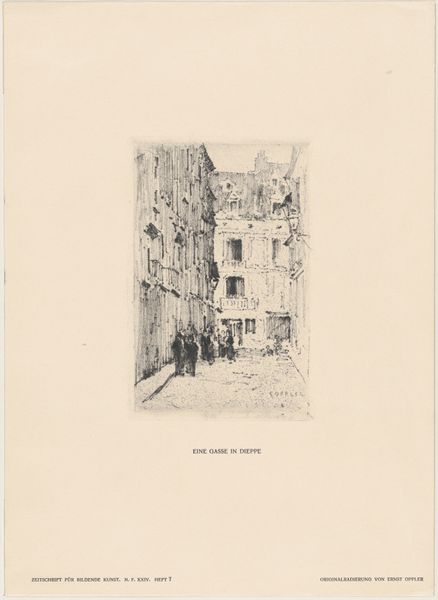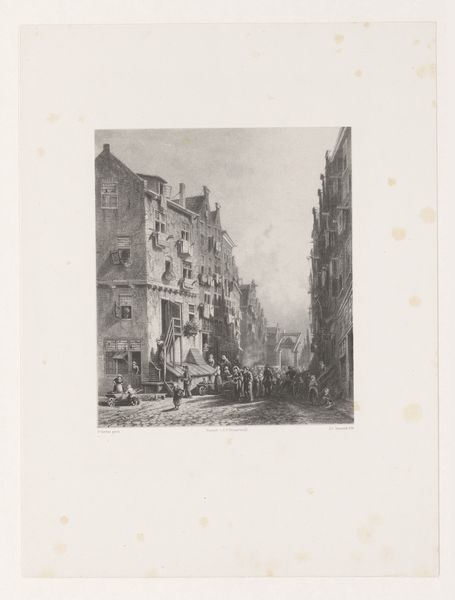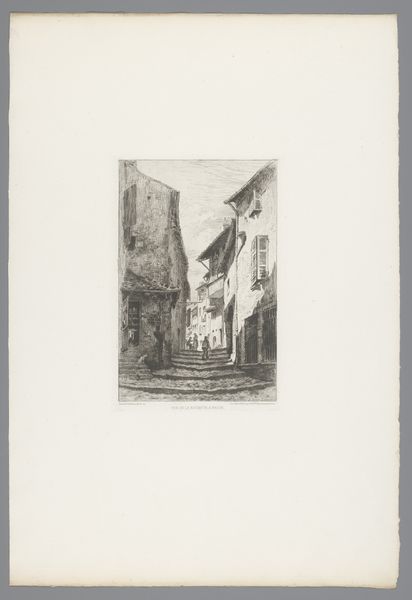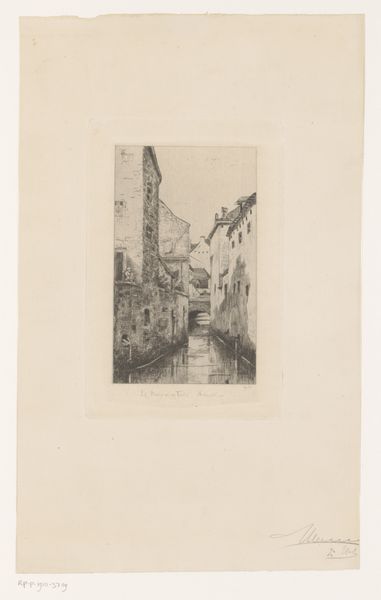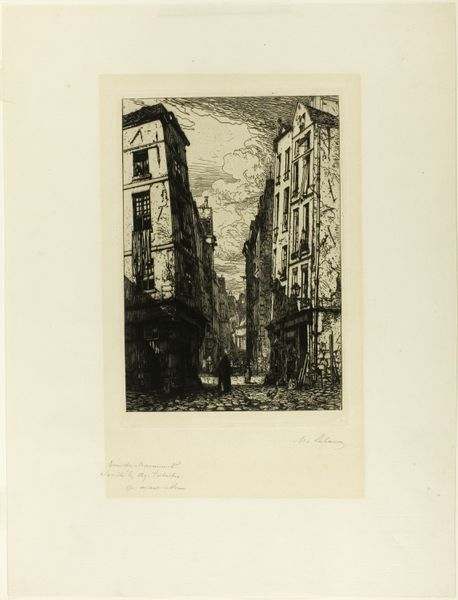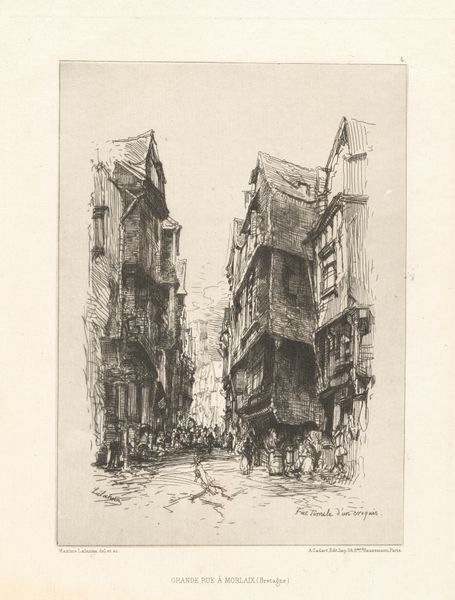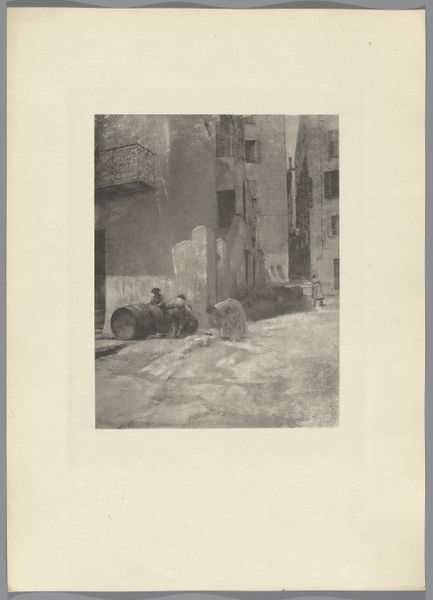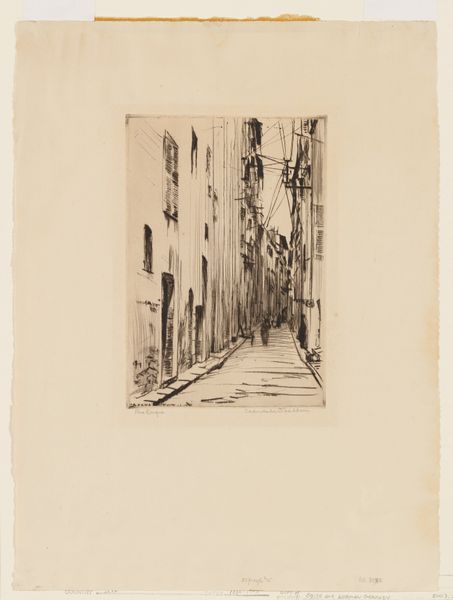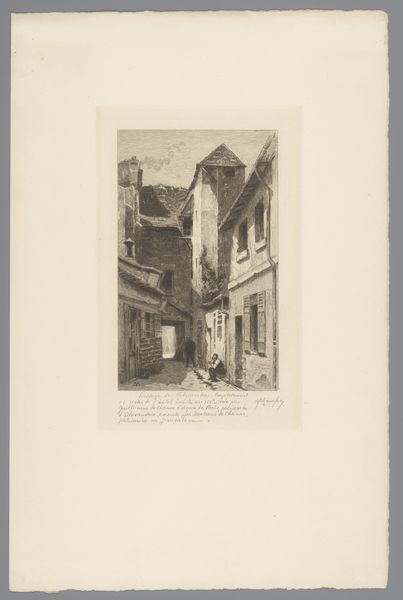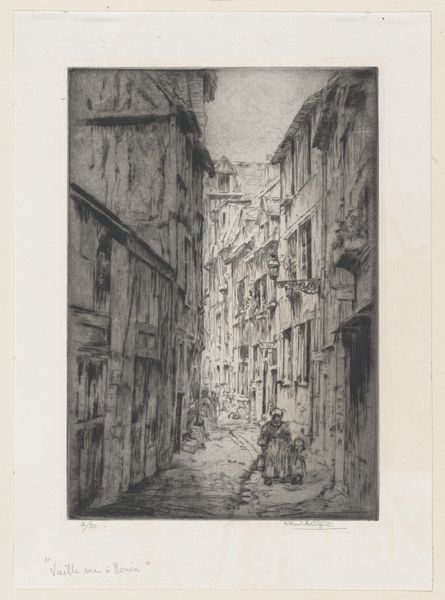
print, etching
# print
#
etching
#
cityscape
#
street
#
watercolor
#
realism
Dimensions: height 272 mm, width 198 mm
Copyright: Rijks Museum: Open Domain
Editor: This etching by Henri Manesse, "Gezicht op de Impasse des Arbalétriers in Parijs," made after 1906, captures a Parisian street scene. It's striking how the dense architectural structures create such a dark, almost claustrophobic atmosphere, despite it supposedly depicting an open street. What do you see in this piece? Curator: This image speaks volumes about the conditions of urban life at the turn of the century. Etching, as a reproductive process, allowed for widespread dissemination of such images, making visible the often-overlooked spaces of working-class Paris. We see here not the grand boulevards of Haussmann, but the narrow, shadowed alleyways, places of labor and residence often conflated. Editor: That’s a good point about the medium, since the contrast produced via etching definitely enhances the image’s commentary on wealth and power. Is this also realism in practice? Curator: Absolutely. Manesse is depicting not just a place, but a reality, shaped by material circumstances. Look at the architectural details, the implied wear and tear. This wasn’t the Paris celebrated in mainstream art, but the everyday experience of the majority, revealing a very different Paris. How do you think the print medium contributes to its social commentary? Editor: I never thought about how something like printing might give rise to social commentaries through affordability, so I can understand how Manesse’s work democratizes not only art, but reveals what needs to be shown and what ought to be critiqued, perhaps for the greater good of humanity. Curator: Exactly. Consider how the relatively accessible medium challenges traditional art spaces and reaches wider audiences. Understanding the means of production gives us valuable insights into the artist’s intent. It’s all connected. Editor: I’ll definitely keep an eye out for these material dimensions when looking at art! I guess labor also comes in many shapes and forms, and through art it is not so much physically displayed, but alluded to through materials and themes! Curator: Indeed. Analyzing the production and consumption of art, unveils significant cultural narratives and it goes well beyond art in terms of social relevance.
Comments
No comments
Be the first to comment and join the conversation on the ultimate creative platform.
